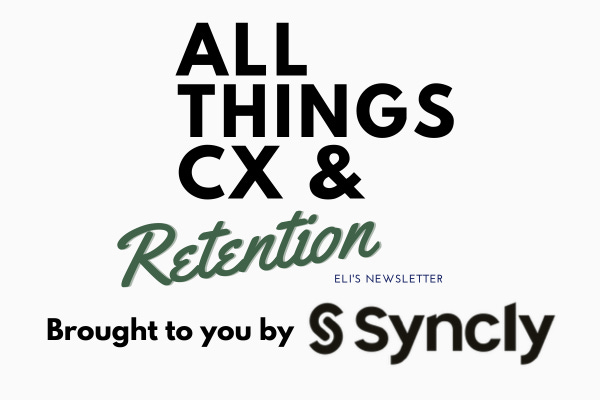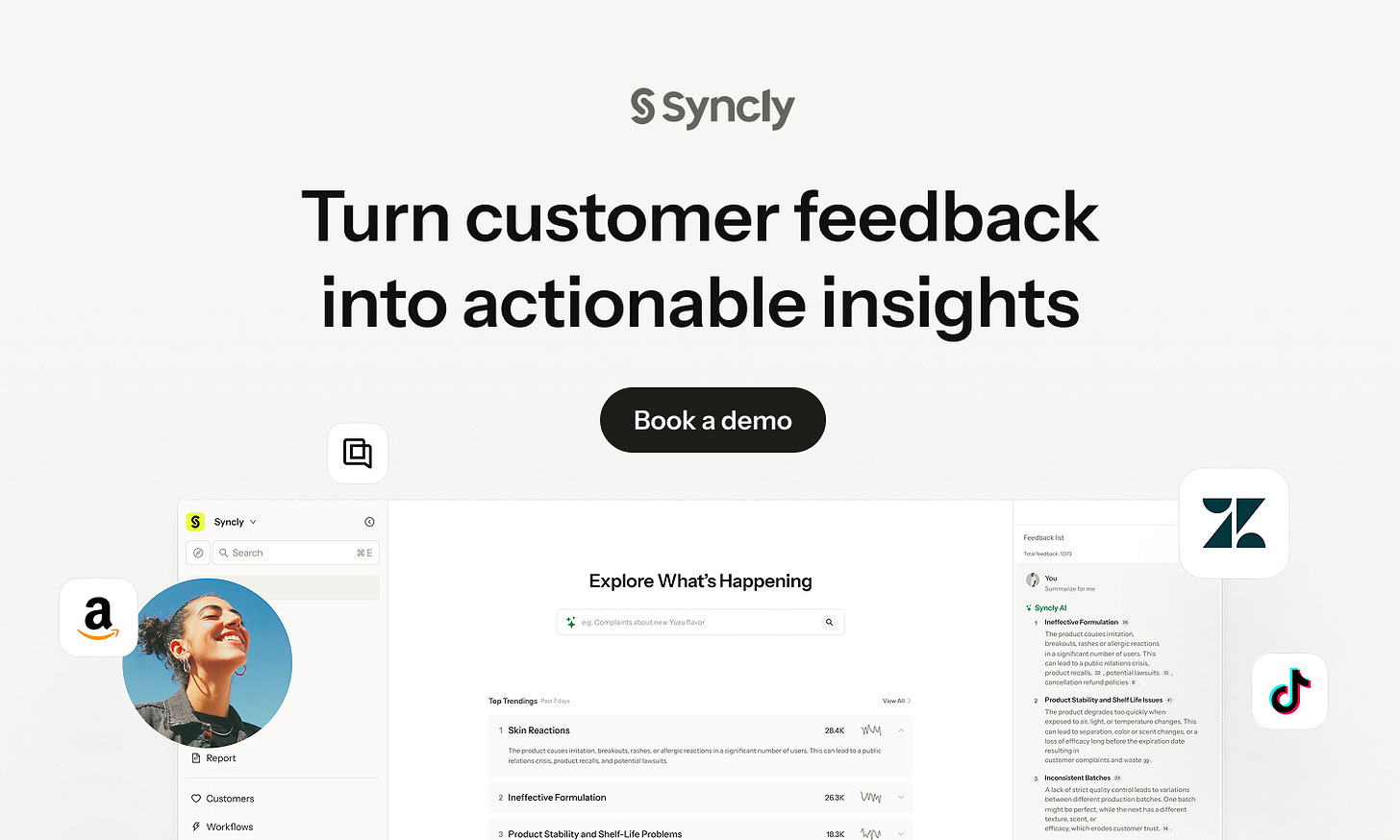BFCM Happens Every Year, WHY ARE YOU NOT PREPPED
Sorry for yelling, but here are 7 ways to make sure it is NOT chaos this year
Hi Team!
I’ve spent the last decade watching brands gear up for BFCM like it’s the Super Bowl of ecommerce. War rooms, prep decks, flowcharts that look like subway maps. And then the weekend hits, and it all falls apart in the exact same way it did last year.
Funny enough, it’s rarely the volume of tickets that breaks you. Volume is generally predictable. You can staff for volume. What breaks teams is losing the thread. By day two, nobody knows what’s actually happening.
Marketing launched a new promo that CX didn’t hear about. Ops is fighting fulfillment fires that CX only learns about when the tickets flood in. Everyone’s working hard, but nobody’s looking at the same picture.
I’ve seen this play out enough times to know what actually makes it easier the next time around. It’s not doing more. It’s doing the boring work earlier.
This week, a quick one: a few ways to make sure you are prepped and ready from a CX pov.
Before I jump in: if you want to learn from one of the sharpest ecom minds, someone we worked with at JRB and someone I recommend to other folks often, check out No Best Practices from Alex G!
Now let’s get into it.
This week’s newsletter is brought to you by Syncly.
BFCM season is near, and we all know it’s about to bury your CX team in tickets. Is your CX team ready to survive the chaos and turn the season into the biggest growth opportunity of the year?
Syncly aggregates customer feedback from multiple sources, including support tickets, product reviews, and social comments, to provide actionable insights that help brands grow faster.
With Syncly, you can:
See Everything in One Place: Unify all your customer feedback, including social channels, for a truly comprehensive view.
Organize Effortlessly: Use AI-powered auto-tagging to classify feedback into granular topics, so you know exactly what matters to your customers.
Discover Insights with AI: Simply ask questions like you would with ChatGPT and get answers backed by direct quotes from your customers.
Act on What Matters: Get real-time alerts and automated dashboards to take timely action on the most critical issues.
From top brands like Kosas and Burberry to fast-growing brands like Neuro, Everyday Dose, and Hum Nutrition, all are using Syncly to turn insights into action.
Want to see how Syncly helps brands scale their CX insights and streamline workflow?
Book a demo today to meet the founders and get a free demo.
P.S. What about the TikTok conversations you can’t even see?
The Syncly team has recently launched Syncly Social, a social listening tool built specifically for videos, including TikTok. You’ll be able to see what customers really think about your brand from untagged brand mentions, or get an unfiltered look at your competitor’s playbook. Ask about it in the demo.
The Same Problems, Every Year
Last year, I talked to a brand that did $4M over BFCM weekend. Great numbers. Their CX team wanted to quit by Tuesday.
The issues weren’t new. Shipping delays piled up because the warehouse got slammed. A promo code glitched and let people stack discounts that weren’t supposed to stack. A product that was supposed to be excluded from the sale kept showing up at 40% off. Customers were confused, support was scrambling, and nobody could get a straight answer about what was actually happening.
The worst part is that all three of those issues happened the year before. Same promo code bug. Same warehouse crunch. Same product exclusion problem. They knew it was coming, and it still crushed them.
When I asked why they didn’t fix it, the answer was honest: “We meant to. We just ran out of time.”
That’s the trap. BFCM prep always feels urgent until it doesn’t, and then suddenly it’s November and you’re back in the same mess.
The teams that survive aren’t doing anything fancy. They’re just dealing with last year’s chaos before this year’s chaos shows up.
What Actually Helps
The quietest CX operations I’ve seen during BFCM are the ones that spent August and September cleaning up the stuff that broke last time. They’re not working harder during the sale. They already did the work.
Here’s how that looks in real life:
Audit last year’s chaos:
Pull everything from mid-November through Cyber Monday. Sort it into buckets: shipping delays, promo errors, product issues, returns. If something shows up two years in a row, it’s waiting to bite you again.
Assign owners before the storm:
Shipping and ops go to one CX lead who sits in fulfillment updates and reports back daily.
Product issues go to whoever’s closest to QC or packaging.
Discounts and promotions belong to someone who’s looped in on marketing sends.
Returns, loyalty, or subscription questions sit with a separate owner. One person per lane if you can.
Rewrite the canned replies:
Take your five most-used macros and start fresh. Use real customer phrasing. The small tweaks make a difference. “My tracking hasn’t moved” lands better than “We appreciate your patience.”
Keep a live dashboard:
It doesn’t have to be fancy. Just something that shows ticket trends, sentiment, and response times in real time. Anything that helps you see before it snowballs.Run a short morning sync:
Ten minutes with CX, Ops, and Marketing. No slides or recap decks, just focus on the top three things customers are saying and what’s being done about them.Track the quick wins:
Keep a shared doc open all week:Added banner with ship-by dates → 200 fewer tickets overnight
Rewrote discount FAQ → cut confusion by a third
Updated packaging insert → fewer complaints next day
Next year, this becomes your first prep checklist.
Clean up your tags:
Agree on clear labels: “shipping_delay,” “promo_error,” “defect_report.” It sounds boring, but it makes the post-mortem usable instead of painful.
The more you prep like this, the more predictable BFCM gets. That’s the difference between panic and pattern recognition.
Make it Repeatable
Every BFCM is a stress test. It shows you exactly where your operation cracks under pressure.
The move is to block an hour the week after and actually debrief. What caused the most pain? What worked better than you expected? What should be automated or fixed before next time? Write it down. Make it specific.
That’s how a chaotic weekend turns into a system. The chaos doesn’t disappear, but it gets more predictable. And once it’s predictable, you can actually plan for it.
Most teams treat BFCM like a one-time event. The ones that win treat it like data collection for next year.
That’s it for this week!
Any topics you’d like to see me cover in the future?
Just shoot me a DM or an email!
Cheers,
Eli 💛
P.S. If you want to figure out how to get your brand to rank high in LLMs and show up in ChatGPT, Gemini, and more… check this out.








